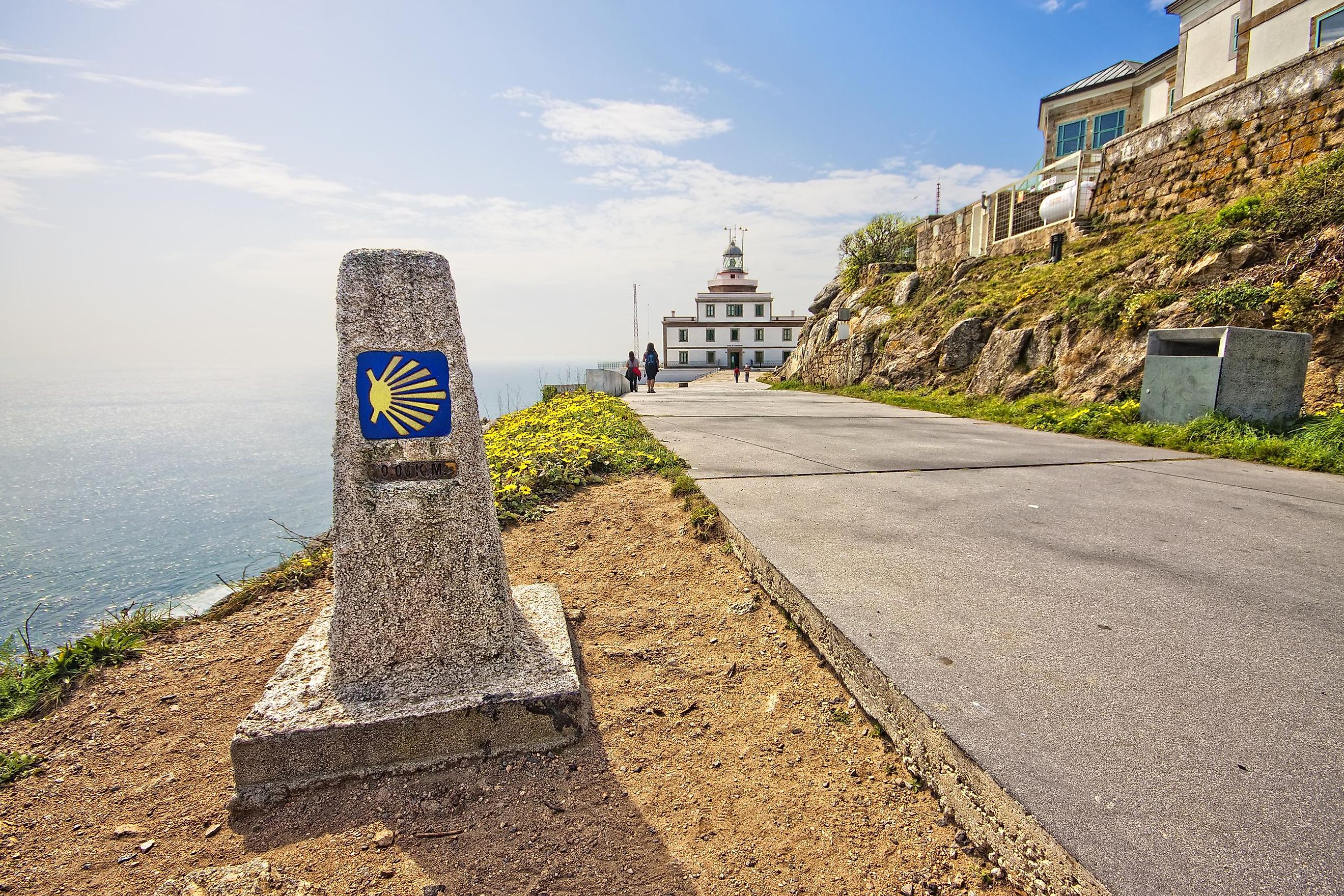
The Classic Routes of the Camino de Santiago
Participating in the ancient pilgrimage to the Northwestern Spanish city of Santiago de Compostela can take many forms. Back in the Middle Ages, subscribers to the Catholic faith would march for weeks, or even months on end, from all corners of Spain (Portugal, France, and even further points of origin in Western Europe as well) to pay their respects to Saint James, whose remains are said to have settled in Compostela under miraculous circumstances. As the centuries unfolded, certain routes were formalized and promoted by the church, the rulers of the Iberian kingdoms, the Codex Calixtinus (a 12th-century guidebook), and the collective preference of the hundreds of thousands of pilgrims seeking penance through this practice of endurance. Today, the Camino de Santiago remains a flexible undertaking. The only objective criteria to become a certified pilgrim is to walk at least 100 kilometers/62 miles (or ride 200 kilometers/124 miles) before arriving at the Cathedral of Santiago de Compostela. Nonetheless, there are a handful of routes that draw the most attention. These are some of the long-standing classics.
Camino Francés
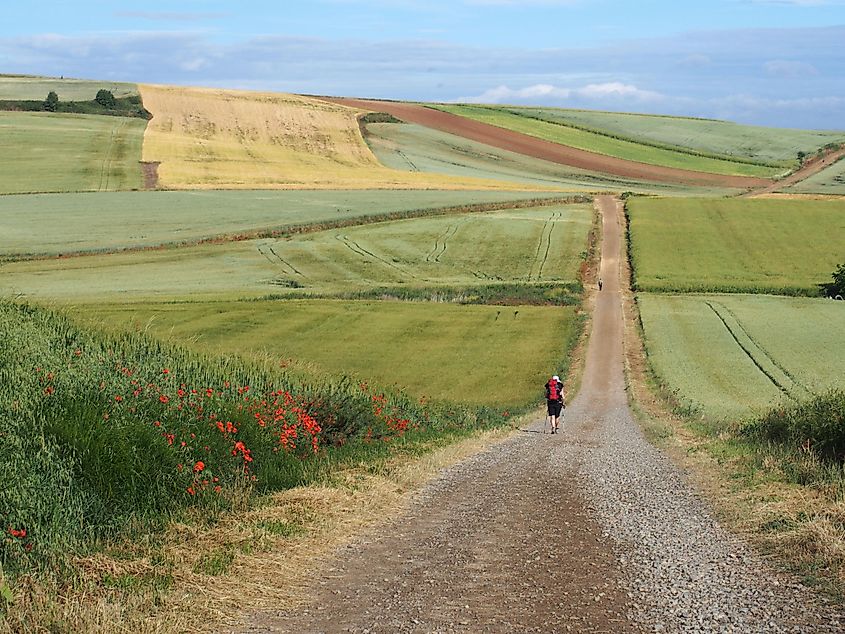
The French Way is far and away the most popular path for modern-day pilgrims. Lately, the vast majority of the nearly half-million backpackers that annually stroll into Santiago de Compostela do so via the Camino Francés, or at least part of it. This route is well-marked, relatively easy (save for the first day up and over the Pyrenees), packed with supportive towns that happily aid pilgrims on their journey, and has gained a ton of favorable attention from a variety of respected sources. In 1987, this route was designated as the first Cultural Route of the Council of Europe. That same year, Paulo Coelho published his inspiring and fantastical tale, The Pilgrimage, in which he and his guide, Petrus, walk this "strange road to Santiago." By 1993, UNESCO took notice of the cultural, historical, and architectural importance of the Camino de Santiago, and chose to make the Francés, Primitivo, and del Norte routes World Heritage Sites. Then, in 2010, the Emilio Estevez/Martin Sheen film, The Way, made the 764-kilometer walk from St.-Jean-Pied-de-Port, France to Compostela (and then onwards to Muxía), irresistible to adventurous audiences.
Camino Portugués
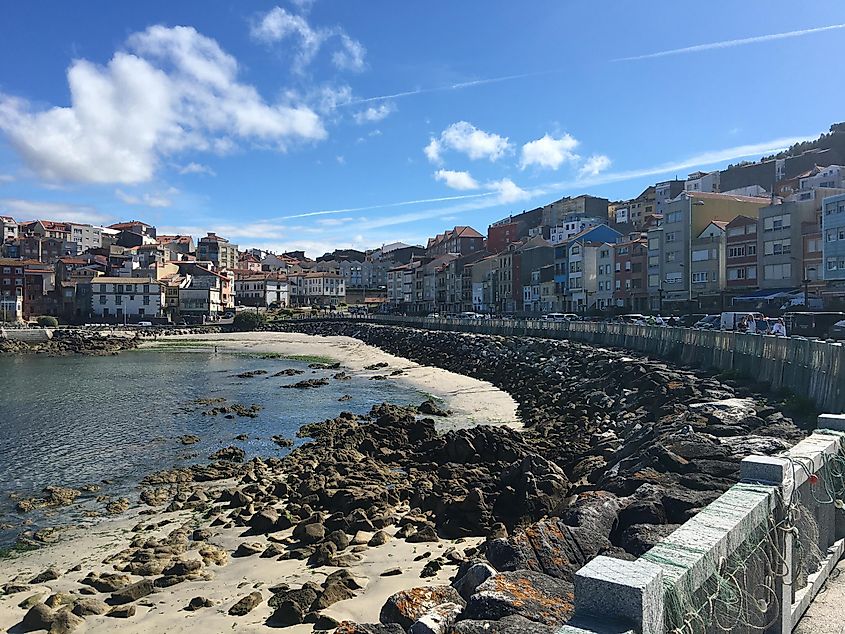
The second-most utilized pilgrimage is that of the Portuguese Way. The original Camino Portugués begins in the capital city of Lisbon (though some choose to start from Faro – Portugal's southernmost municipality) and continues on a northbound, inland trajectory for approximately 620 kilometers. With that said, a significant percentage of people drop in from either the Spanish border town of Tui, if they wish to experience the sun-soaked countryside en route to Santiago, or the UNESCO city of Porto, Portugal, to bask in the beauty of the Coastal Way. Both options have their supporters, but the sparkling waters of the Atlantic Ocean, wild, windswept beaches, and a nearly symmetrical blend of Portuguese and Spanish terrain (note the transition from "Bom Caminho" to "Buen Camino" upon crossing the Minho River) has made the latter ever more magnetic.
Camino Inglés
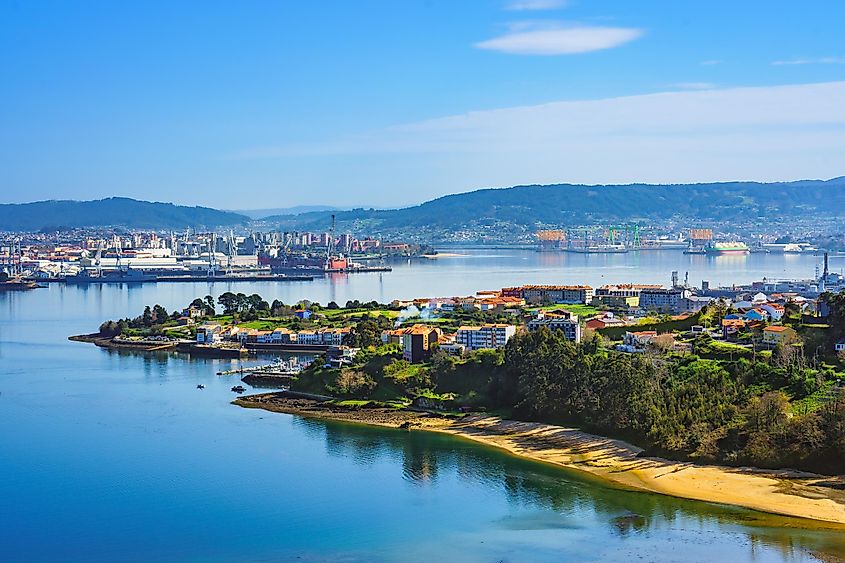
The English Way derives its name from the British sailors (as well as Irish, Scottish, and Scandinavian) who would make a pilgrimage to Santiago via the nearby Galician port cities of A Coruña or Ferrol. These shipping routes were established for trade purposes, but by about the mid-14th century, many seamen showed interest in the legend of Saint James, and a desire to take part in what had become one of three great Christian pilgrimages around the world (the other two being to Rome and Jerusalem). The Camino Inglés sees about the same level of modest annual traffic as the Primitive and Northern Ways, but of all the commonly-trodden Caminos, this one is the shortest. While the 75-kilometer journey from A Coruña will still deliver the exceptional seafood served in quaint villages of Northwestern Spain, only the 119-kilometer path from Ferrol will garner official certification come to Compostela. In either case, both paths converge in Bruma.
Camino Primitivo
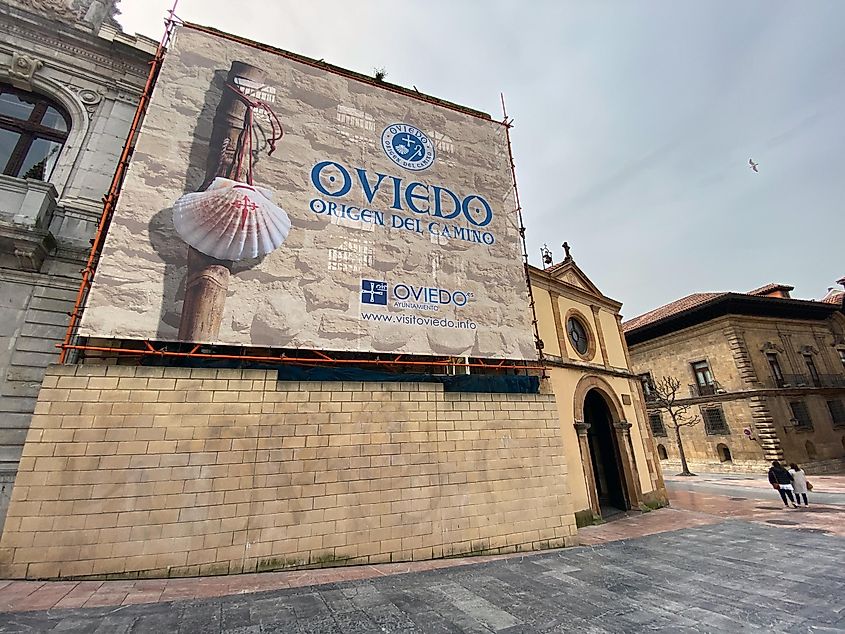
In the early 9th century, after the remains of Saint James were reportedly discovered near what is now Santiago de Compostela, news quickly reached Alfonso II in Oviedo. Keen to verify the groundbreaking relics, and to be present at such a holy site (he was, after all, nicknamed "Alfonso the Chaste"), the King of Asturias walked the roughly 321 kilometers that corresponds with the Camino Primitivo (Primitive Way, or the Original Way). This route is undertaken today because of its place in history, and authentic feel. The trail is aptly named, as it features no asphalt (and can therefore be quite muddy during the rainy season), and imposes a strenuous elevation profile. It does not provide the same abundance of public albergues (hostels) compared to other popular caminos. For the resolute, all of these factors make for an even better pilgrimage. Oh, and look forward to the Roman walls of Lugo, a World Heritage Site and one of the best-preserved fortifications in all of Europe.
Camino del Norte
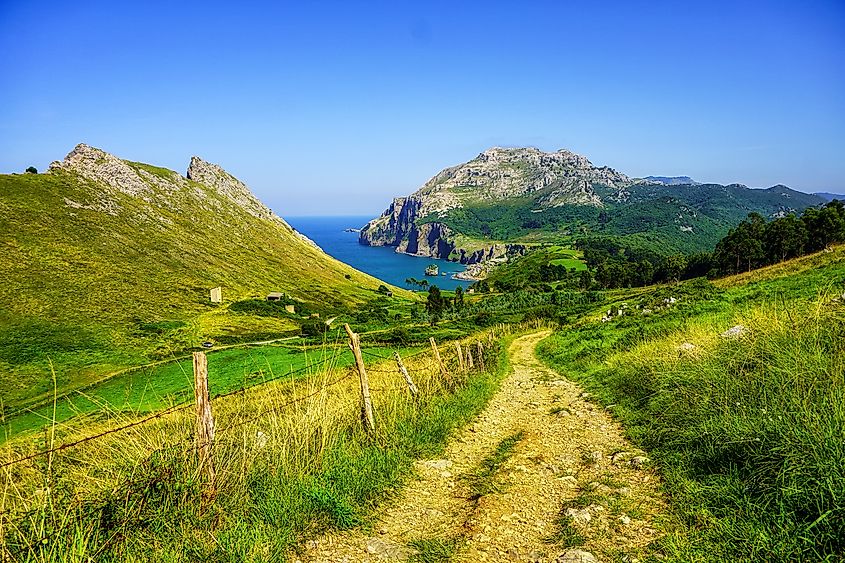
The Northern Way features a ruggedly beautiful mix of the Cantabrian Mountains and Cantabrian Sea/Bay of Biscay, punctuated by coastal villages serving up hot, delicious cuisine at the end of each day. This quiet, green, and spiritually satisfying route is about 824 kilometers if walked in its entirety from the Basque town of Irún, right on the border of Southwestern France. With that said, upon reaching Gijón, pilgrims can drop down to Oviedo, and pick up the Camino Primitivo. No matter the preference, as always, all roads lead to Santiago. The Camino del Norte is also referred to as the Camino de la Costa, as it parallels almost the entirety of the Iberian Peninsula's Northern coast. This Camino is not only the second-longest (only behind our next and final option), but the second-oldest, as it was used before the creation of the Camino Francés, when it was considered too dangerous to cross the Moor-occupied territory of the North-Central kingdoms.
Via de la Plata
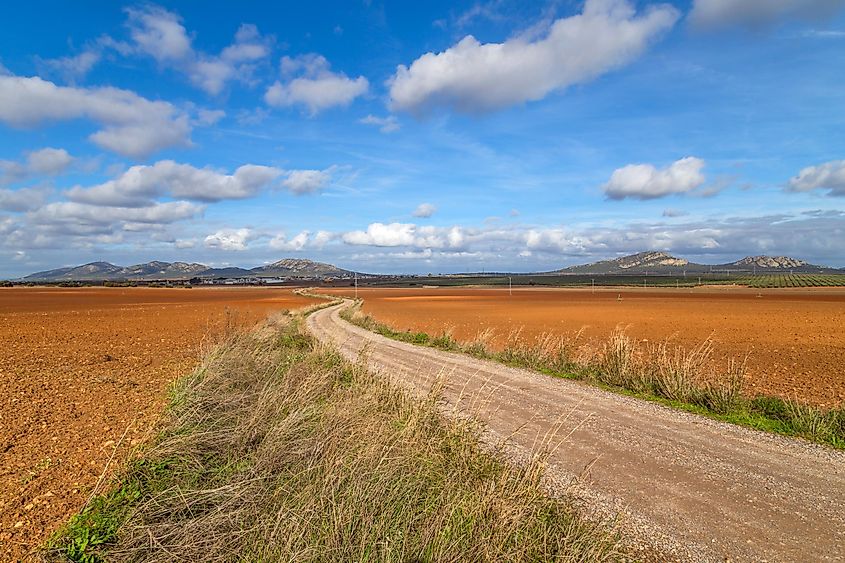
The "Silver Route" is a bit of a misnomer, however, this old Roman trade route was used to transport minerals (but of the gold and copper variety). At 970 kilometers, the Via de la Plata is the longest traditional pilgrimage of the Camino de Santiago network. It begins in Seville, in Southwestern Spain, and trends North for much of its length, until reaching the city of Astorga, where it joins the Westward Camino Francés. Along the way, the typical yellow markings will be contrasted by the occasional green markings. The former indicates the path to Santiago, while the latter highlights the original Roman road. This Camino shows a vastly different side of Spain's landscape and history, though these appeals can be hard-earned at times. The Via de la Plata is not only long in its entirety but demands high-mileage days in between resupply/shelter towns. Because this route begins so far South, and oftentimes has a complete absence of shade, it is not advisable to take it on during the summer months. Conversely, it is an excellent option during what would be the unpleasant off-season for many of the previously-mentioned Caminos. Either way, you are sure to have this path all to yourself.
Bonus Route: Camino Finisterre
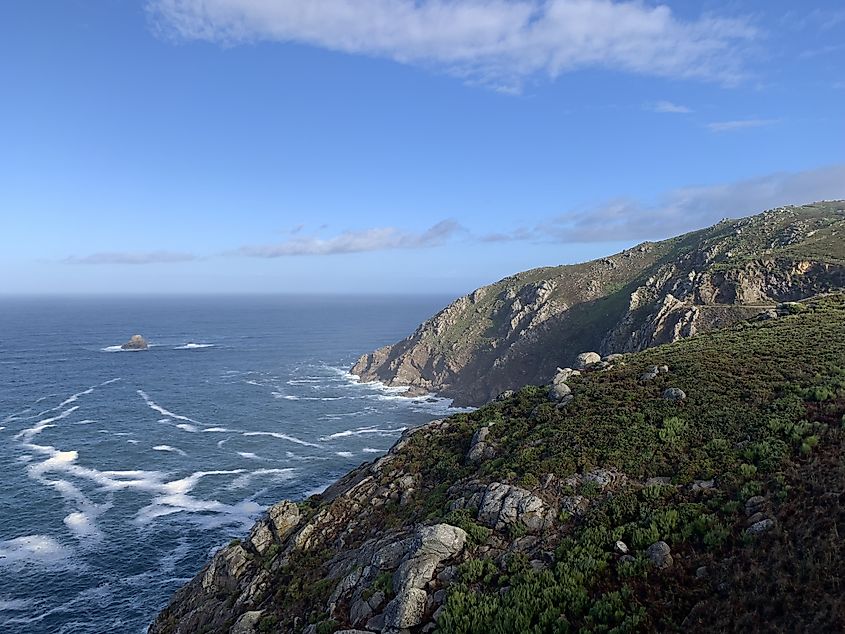
You can't go this far and then not go further. Regardless of what route is chosen to reach Santiago de Compostela, an add-on trail to the "End of the World" is available to all (though taken by only about 1% of annual pilgrims). Just West of the Praza do Obradoiro (i.e. the main square and typical finish line in Compostela), the Camino Finisterre resumes the optional journey to one of two (or possibly both) fishing villages. The standard yellow arrows and scallop shells continue for 89 kilometers to Cape Finisterre/Fisterra, with a fork eventually diverging to Muxía, which is 86 kilometers from the Grand Cathedral. Both of these places along the Costa da Morte (Coast of Death) are arresting, and mark a fitting end to the road – because there simply is no more road, only the vast expanse of the North Atlantic Ocean. Watch the best sunset of your life, reflect on whatever amazing pilgrimage brought you to this point, and whisper one last, "Buen Camino," to the waves.







